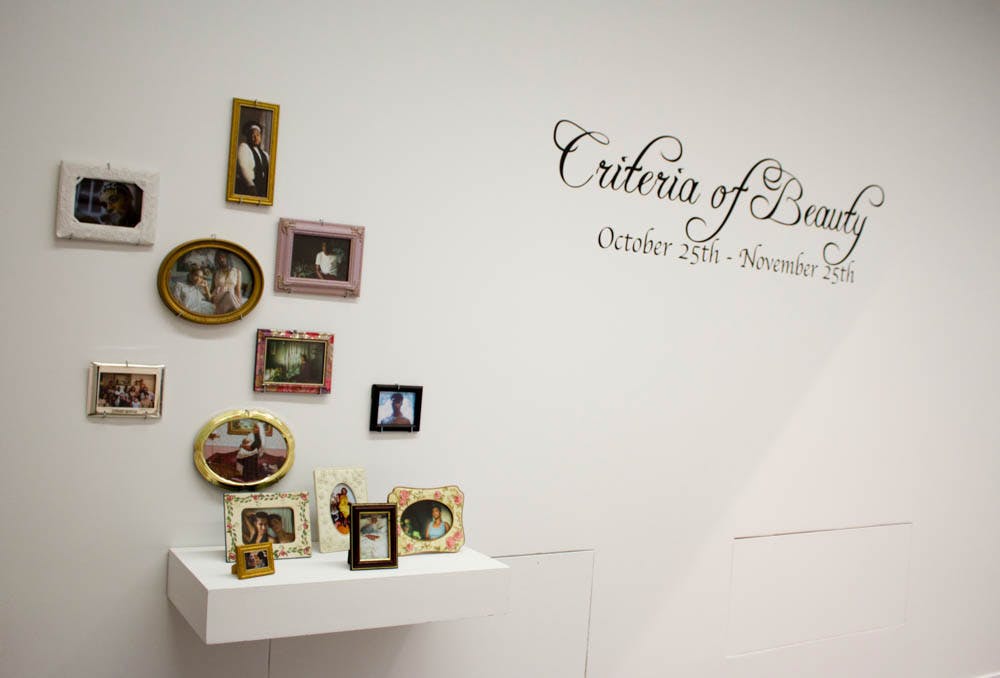“Criteria of Beauty,” curated by Qualeasha Wood and Dāa Guy, seniors at the Rhode Island School of Design, showcases work representing perspectives existing “outside the boundaries of whiteness, heteronormativity and gender binaries,” according to the exhibition’s wall text. The exhibition will run Nov. 6 to 25 at the RISD Gelman Student Exhibitions Gallery. The show features a wide array of media — including textiles, sculpture, audiovisuals and illustrations.
The exhibition is a form of “fighting all these boxes and labels, that people put (queer artists of color) in,” Wood said.
The curatorsn noted a need for queer artists of color entering a gallery space to challenge its structures. “How do we psychologically deal with the reality that this space was used to objectify and commodify us in the past?” Guy asked, reflecting on the process of curating “Criteria of Beauty.”
The curators spoke of the tensions artists of color face in most gallery spaces. “When POC artists are put in galleries, it’s still voyeuristic,” Wood said.
This exhibition is a challenge and reclamation of the existing gallery setting, in order to “shift its trajectory, to be something that puts us in power,” Guy said.
To this end, the exhibition created a space that values art expressing perspectives of queer people of color. “The goal of the show was to give POC artists an opportunity to define — for themselves — what their work means in a gallery setting, and in a personal setting,” Wood said. “You define your own reality. Your experiences are your own, your voice is your own,” she continued.
The exhibition prioritizes artists’ expression by giving them a space to reclaim the gallery setting by their own means. “We want to change the space, not only for everyone who walks in, but for the people (showing) in it,” Wood said. “I think a lot of people who came into the show made work for themselves.”
The show also served as a catalyst and allowed for the exchange of meaningful feedback as an “important moment” that opened the dialogue for artists concerned with conversations that extend beyond the normative boundaries of white and heteronormative standards of artistic expression, Guy said. “We’re often not offered the critique — or the help we deserve — in this community of artists.”
The impact of the exhibition extended to younger artists who identify as queer people of color and are looking for similar spaces for their art and expression, Wood said. It was important “for sophomores and first-years to see that you can create these spaces for yourself, to get the feedback and critique you deserve,” Guy said.
As such, the call for works put out by Guy and Wood took a non-traditional approach that allowed artists to create freely. The artists were given the show’s statement, Wood explained, and were asked to “submit whatever (they) think fits our statement, and (to) show us the work (they’re) excited about, that (they) care about,” she said.
Nadia Wolff ’21 RISD ’21 showed two pieces at the exhibition, including one entitled “Linoleum Flowers, Tools for Queer Coding,” near the entrance of the gallery. Wolff explained that the piece is concerned with “queer representation … and how that is in conflict with traditional ideas of feminine presentation.” Wolff attempted to “possess … the identity-specific notions of beauty, of belonging, of home” in both pieces, they said.
The exhibition is an “act of healing,” Wood said. “Your experience is valuable. I think a lot of people struggle with believing that,” Guy added. “The moment you start to believe that, is the moment you find out how powerful your voice is.”





